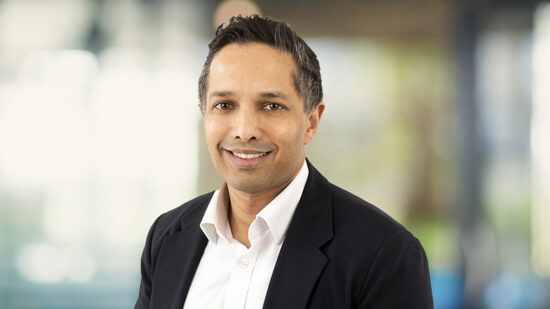
In the latest in our regular series, Portfolio Adviser hears from T. Rowe Price’s head of distribution, UK and Ireland Nataline Terry (pictured right)
Which particular asset classes and strategies do you anticipate your intermediary clients focusing on in 2023?
It was an incredibly challenging 2022 for the entire UK fund management industry, with sizeable outflows experienced across both retail and institutional channels. We did, however, start to witness small signs of investor optimism late last year, which picked up a little steam in early 2023.
Then again, we have witnessed increased volatility in recent weeks – particularly within fixed income – propelled by the banking issues on both sides of the Atlantic. Yet it is too soon to detect whether this will have a prolonged impact on investor sentiment more broadly.
We are cautiously optimistic for equities during the period ahead but, with bouts of turbulence likely to be a feature of markets for the foreseeable future, investors are seemingly more confident in style-agnostic strategies at this point in time.
The interest in emerging markets – both equity and debt – is still relatively muted. We are increasingly confident on the developing world, however – particularly as sentiment towards China improves post the zero-Covid policy. In this regard, our China Evolution strategy is well positioned to capitalise on a positive sentiment shift, especially as we expect returns in the Chinese market to broaden from the market’s mega caps.
“The asset management industry still has work to do to demonstrate the benefits of investing for better retirement outcomes.”
Should end-investors – and, by association, asset managers – be thinking beyond equity and bond investments? Towards what?
In an environment of heightened price pressures, investors have been looking to alternative assets – such as real estate and infrastructure – to act as an inflation hedge. These assets are also gaining traction as part of the wider sustainability drive to meet net-zero transition goals. Of course, it is vital for clients to understand the benefits and the risks of alternatives, as accessibility and liquidity profiles can vary widely.
While cash has been back on the investor radar in recent months, we still believe in the long-term advantages of putting your money to work in the markets and the benefits of compound interest. FCA research found approximately 4.2 million consumers in the UK are holding £10,000 or more of investable assets in cash so clearly the asset management industry still has work to do to demonstrate the benefits of investing for better retirement outcomes.
To what extent do private assets and markets fit into your thinking? What are the current pros and cons for investors?
The private markets space is an area of tremendous client interest and growth and, at T. Rowe Price, we have looked to strengthen our capability in recent years, as evidenced by our 2021 acquisition of leading alternative credit manager Oak Hill Advisors.
While institutional investors have been making sizeable allocations to private markets for some time, this is still in its infancy in the wealth segment. Our goal is to work closely with wealth managers to gain an understanding of their specific needs in this space. More broadly, we are keen to articulate the merits of private market allocations, such as the potential to improve portfolio diversification. Again, education is key, as clients will need to truly understand the differing characteristics of this space, in terms of liquidity and lock-ups, for example.
Given client and regulatory pressure on charges, how is your business delivering value for money to intermediaries and end-clients?
As one of the largest asset managers in the world, we truly believe in the power of active management in meeting long-term client outcomes. Here, our fundamental bottom-up research platform helps our portfolio managers identify investments on the right side of change, which ultimately helps us outperform benchmarks and peers over the long term.
We understand value is more than just performance, however. This is why we continually evaluate and look to enhance the client experience by providing strong service and enabling access to our investment professionals, our investment insights and market views. Obviously, transparency on fees and overall cost is also an important element. In our view, maintaining close relationships and undertaking constant dialogue with clients is crucial in delivering good outcomes.
“Impact investing has significant potential and we strongly hope the FCA can ensure it becomes truly accessible to UK retail investors.”
How much of your distribution is currently oriented towards ESG issues and sustainable investing? How do you see the responsible side of investing evolving?
ESG features heavily in the conversations we have with clients, at both a portfolio and corporate level. As a group, we continue to be committed to the Net Zero Asset Managers initiative, as we believe it is vital our industry continues to move in the same direction as society – if not taking a lead role in the push for a more sustainable future.
While we now have $93bn (£75bn) in ESG-aligned assets at T. Rowe Price, we understand sustainability is not just a portfolio-level story. This is something we are embedding across all business functions – from investment to technology and reporting. We now have more than 60 people dedicated to ESG to support our group-wide efforts.
Specifically in the UK, we want to ensure upcoming regulatory change in relation to sustainable investing will deliver the desired positive outcome for society overall. This is why we wrote to the FCA recently to seek changes to its impact investing definitions in the Sustainability Disclosure Requirements. Impact investing has significant potential and we strongly hope the FCA can ensure it becomes truly accessible to UK retail investors.
How are you now balancing face-to-face and virtual distribution? Have you identified aspects where one is especially better (or worse) than the other?
With portfolio managers all over the world, the ability to use technology to swiftly connect them with our clients has been invaluable. Advances in connectivity also brings benefits for the environment, with less of a need for our investment professionals to travel for ongoing client relations. Face-to-face interactions are still a pivotal part of the client service proposition, however – particularly in building initial relationships.
In our everyday client engagement, we definitely believe there are benefits of both virtual and in-person interactions. We are continuing to invest in our technology capability to ensure we can meet the individual needs of our partners.
What aspects of your lockdown routine – personal or professional – have you continued as people migrate back to office working?
Like the experience of many people during lockdown, my daily exercise routine was a lifeline through this challenging period. While it can be more difficult to find the time when working in the office, it is extremely important – both physically and mentally – to take some personal time. I enjoy running, as it enables me to switch off and refresh, and I try to get out at least three times a week.
When you are constantly interacting with family, friends and colleagues, it is easy to spend all your time thinking about the needs of others. As the aircraft safety video says, however, you do need to fit your own oxygen mask first. This is something I have been striving to improve over the last couple of years – to focus some time on me. If I look after myself, I am better able to look after others.
Finally, in what ways do you see the asset management sector evolving over the next few years?
There are a number of trends that will likely accelerate in the coming years – for example, we continue to see ongoing industry consolidation, which is unlikely to abate any time soon. The distribution model continues to evolve, which means we are now partnering with larger, but fewer, clients. This will require deeper working relationships between asset managers and our partners. It is important we partner from the bottom-up to really understand the challenges our clients face – and then how we can help them.







